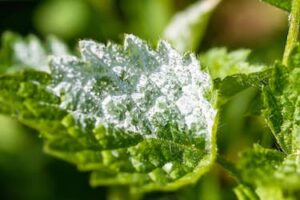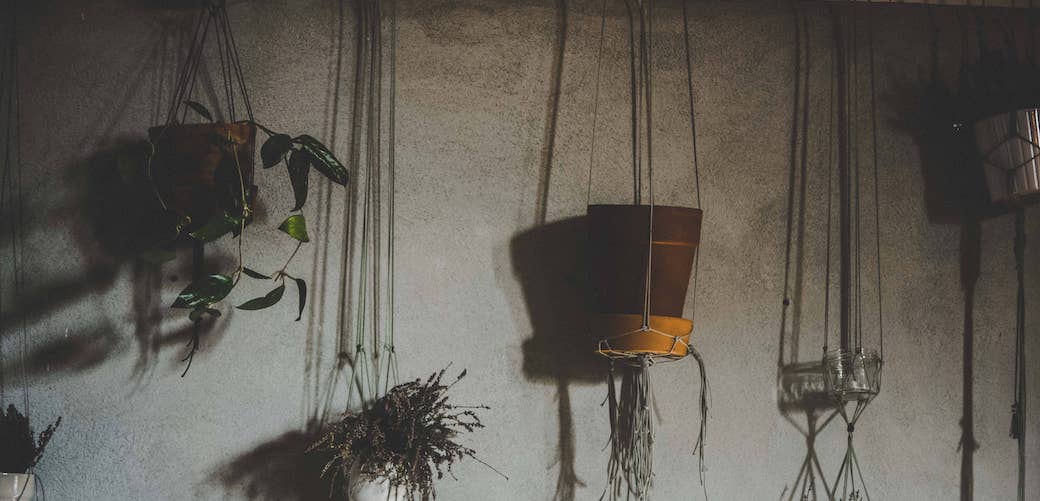If you’ve got problems with black mold in your house, you might be looking for the culprit – and your eyes may land on your houseplants if so.
But, is it real? can houseplants cause black mold?
Houseplants do not directly cause black mold, but they can contribute to it, especially if you are over-watering them, or if they are sitting in old, poorly draining soil. If you mist your plants, this may also contribute to mold, both on the leaves and in your house or furnishings.
Remember that houseplants also emit some water vapor, increasing the humidity levels in your home.
Therefore, if you have a lot of houseplants or you keep them bunched into a group without much air circulation, close to a wall, they might be contributing a surprising amount to the humidity levels – and risk of mold growing.
But let’s see what to do about it:
- Best Natural Anti-fungal for Plants- Harris Neem Oil
Mold can be dangerous, but there are many different kinds of mold, and to determine whether the mold is dangerous, you’ll need to try and identify it. You may be able to do so visually, or by checking what’s causing it to form.
You should still take it as a sign to reduce your watering a bit, and let the soil dry out more thoroughly between watering sessions so that the fungus has less moisture. If you are getting the leaves wet, you may want to cut back on misting for a while.
Some of the other types of mold you may see are listed below.
When deciding if a mold is dangerous, remember that you should always wear a mask and possibly gloves when dealing with mold, so you minimize the risk of inhaling mold spores.
 1) Powdery Mildew
1) Powdery Mildew
Powdery mildew is white powder that appears on leaves and plant stems and can spread to the soil after a time. It is sometimes more gray than white, and looks a little like flour has been sprinkled over the plant.
This is not generally dangerous to people, but can kill the plant.
2) Sooty Mold
Black patches near the base of the plant and on top of the soil often indicate sooty mold. This is a side effect of your plant having scale insects, which excrete honeydew (sugary liquid). The mold feeds on this.
It is not particularly dangerous to people or plants, but the scale insects will want treating, after which the mold should clear up. Other types of plant pests such as aphids can also cause sooty mold, as they too excrete honeydew.
Here‘s a more detailed article about sooty mold on plants, if you’re interested in the topic.
3) Gray Mold
Dusty gray spores that gather on the plant’s soil or in its dense foliage. This can kill your plant. You should address gray mold quickly, taking proper precautions.
4) What About Black Mold?
If you notice black mold forming on your plant or – more likely – on the wall around your plant, you will need to take action and both get rid of it and prevent it from coming back.
Black mold is caused by excess moisture hanging around, creating a breeding ground for mold spores.
It should be noted that there is not a specific type of mold known as “black mold,” but it is commonly used to refer to a mold called Stachybotrys chartarum, which has some links to respiratory problems.
This kind of mold is usually found in the corners of rooms, and is likely to be from a combination of factors, not just houseplants. Poor air circulation, improper ventilation, and excess moisture are the main causes.
Houseplants can contribute a little to poor air circulation – if you have a lot of them – and excess moisture, especially if you regularly spray your houseplants.
You can somewhat reduce the chances of them contributing to black mold by keeping them away from walls and any soft furnishings, particularly when spraying. Letting them dry out between waterings will also help.
If you’re curious whether or not you can safely spray (or mist) your plants everyday, read my article about misting plants here, where I describe how you should do it and I include facts you should know before misting your plants.

Some houseplants may not like to be dried out, however.
If you have a bathroom with lots of light, you may wish to move the houseplants in there so that you can take advantage of better ventilation, and waterproof walls. You can easily wipe down tiles once you have finished spraying.
These houseplants will likely also enjoy the steam caused by showers/baths, and will no longer be contributing to any issues with saturation in the bedroom/other rooms. Wipe down affected walls with white vinegar and treat with anti-fungal products.
To summarize:
Houseplant mold may not be dangerous, but houseplants could contribute to dangerous mold in your home.
Should I Remove Mold From Houseplant Soil?
Because of how readily mold spores can spread, if you find mold in the soil of your houseplant, you might be wondering if you should remove it – and how.
The answer is yes, you should remove mold from houseplant soil.
You can wipe mold off the surface of leaves using damp cloths (always damp, so that the spores get trapped and don’t spread everywhere in the air), but this doesn’t work with soil. So, what should you do?
If you’re looking for a more detailed guide on how to get rid of mold from different parts of your plant, I think you will find this article very helpful.
The best way to get rid of mold in houseplant soil is to remove the soil and start again.
Depending on how deep the mold goes, this could mean simply scooping the top layer off with a trowel, and replacing it with a fresh layer of soil, or it could mean emptying the whole pot and starting again with a whole new batch of soil.
How To remove Mold From Houseplant Soil
How to remove mold from houseplant soil:
1) Start by removing all the mold-contaminated soil from the pot.
2) Next, use a clean, damp cloth to wipe down the edges of the pot, getting rid of any spores or particles that have ended up there. You may wish to wipe the plant stems, too.
3) Leave the remaining soil to dry out if it is damp. This will discourage any mold that remains from growing further as it won’t have the right environment. You should always allow soil to dry at least a bit between waterings, even for damp-loving plants, to discourage mold.
4) Get some sterile compost and fill the pot back up to the top. Leave it for a while, and then water lightly. If you have repotted your plant entirely, let it dry out a bit before watering. Remember to clean the pot before you reuse it.
If you need a more detailed guide on how to change the soil in indoor plants, check out my article here where I describe the process in detail with pictures.
Best Natural Anti-fungal For Houseplant Soil
After you’ve done these steps, it’s likely there are still going to be mold spores in the soil unless you have replaced the whole lot, so you may find that it helps to add a natural anti-fungal to the soil to discourage the mold from spreading again.
Neem oil is a natural oil extracted from the tree called Azadirachta indica and it is used effectively for pests and disease control in plants.
This is my favorite Neem Oil on Amazon, it is great quality and works perfectly every time.
Best DIY Solution To Remove Mold From Houseplant Soil
However, if you’d like to try a DIY solution at home, there are options. You need to be careful not to harm your plant in doing this, but most plants will not mind if you sprinkle a solution made of cinnamon and water or baking soda and water in small quantities on their soil.
Apple cider vinegar is also good for deterring mold, but must be heavily diluted before you add it to a plant’s soil. If you notice ill effects from any of these things, stop using them. Instead, try to place your plant in direct sunlight (if it will tolerate it) for a few hours a day, as this will also help to kill mold.
Speaking of vinegar, if you want to know more about the topic, you can read my article where I talk about the effects of vinegar on houseplants and I also include a guide on how to save your plant if it’s been affected by vinegar.
Final thoughts
Houseplants can contribute to mold problems, both in the home and in their own little environment. If you are having difficulties with mold, there are lots of things you can do, such as replacing the soil, decreasing watering, and increasing sunlight.
Always remember to take precautions when dealing with every kind of mold. It may not be dangerous to people, but it is safer not to inhale the spores. Wear a mask at least, consider gloves, and wash your hands, arms, and face after you’ve finished.


